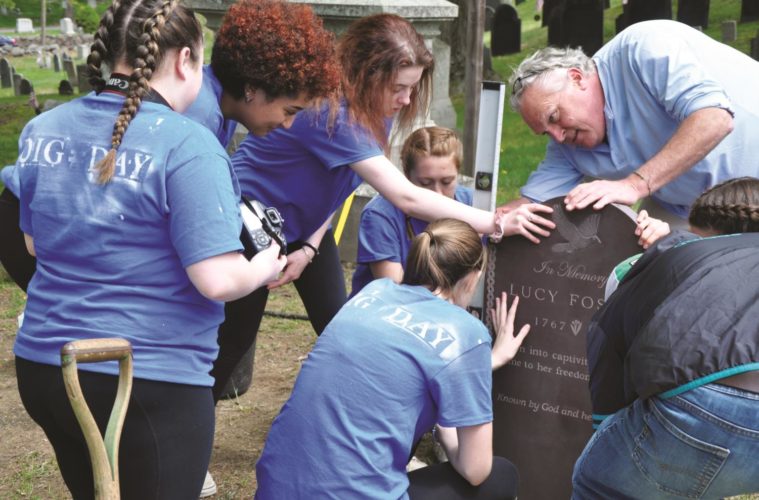Last fall, students at The Academy at Penguin Hall in Wenham who took my elective course “Out of the Shadows” were asked to identify an area woman who was held as a slave in the eighteenth century and who was buried in an unmarked grave. If they could find such a woman, I asked, would they be willing to give her a proper gravestone? Were they up to the challenge? Elise Welch remembers thinking that “huge, seemingly impossible ideas usually come from students, but this one came from the teacher.” Classmate Caroline Buck of Andover answered the call and made swift work of locating such a woman. Within days, Buck announced to the class, “We have a name!” That name was Lucy Foster.
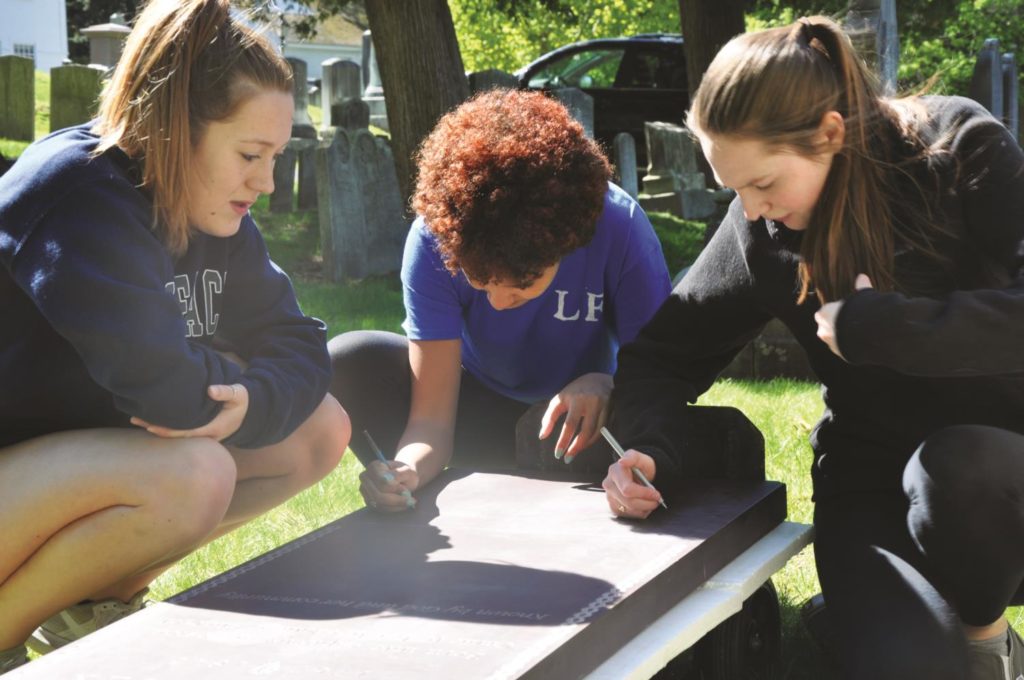
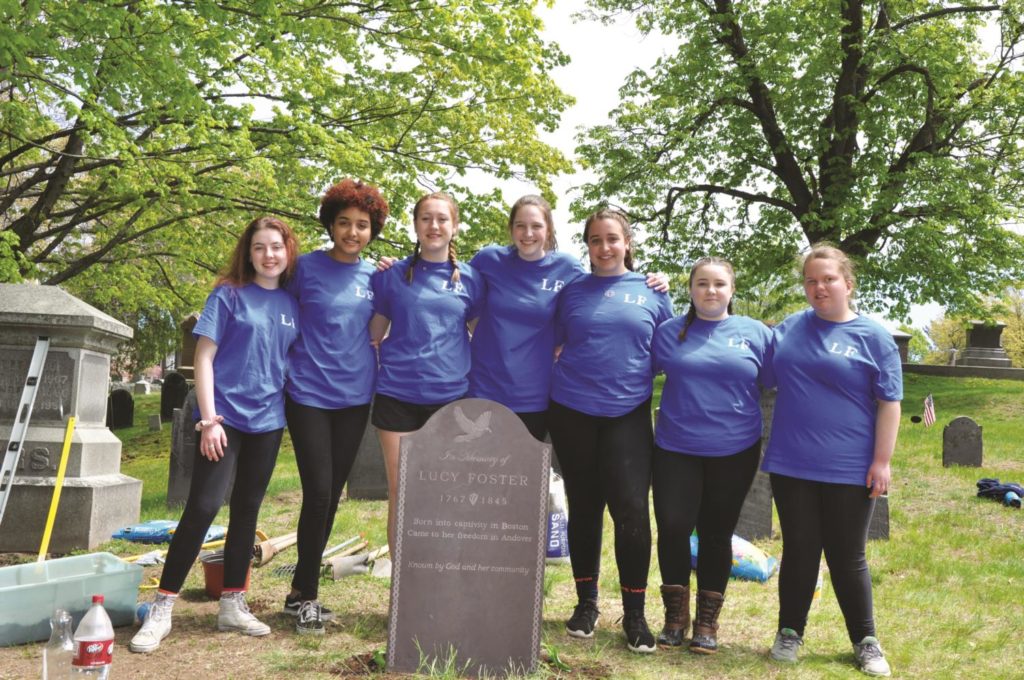
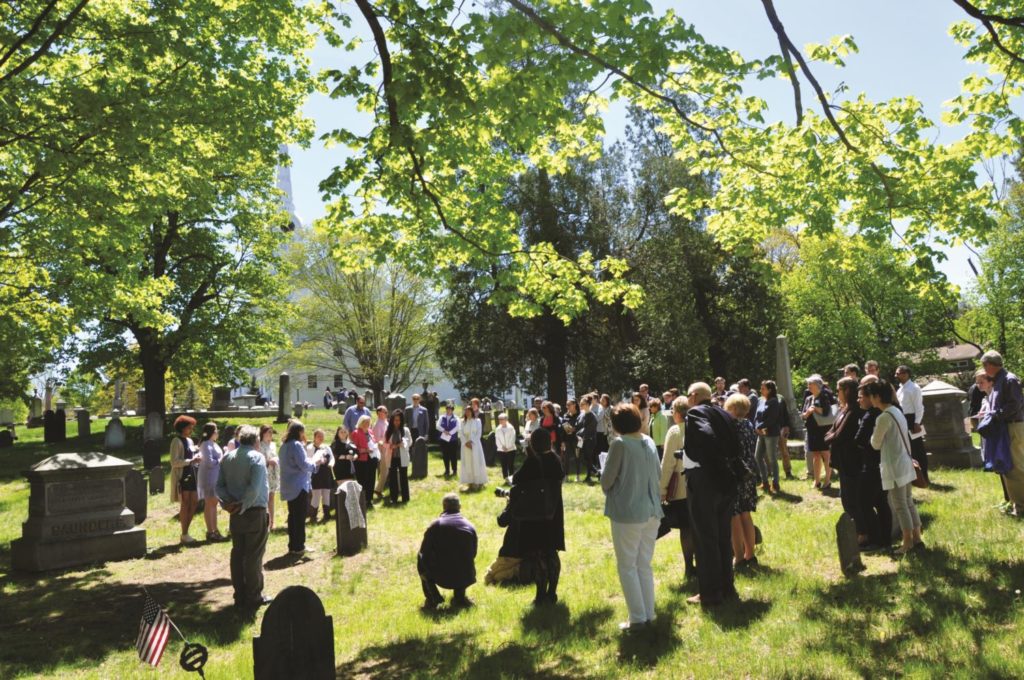
From finding a name, the class moved quickly to uncovering a remarkable story. Born into slavery in Boston, Lucy Foster was given as a “wedding gift” to Hannah and Job Foster of Andover in 1771. She was freed at the age of 16, and in time returned to care for her aging former mistress. When Hannah Foster died, she left Lucy an acre of land, a cow, and a small amount of money. With help from members of the South Church in Andover, where Lucy herself was a member for over 50 years, she was able to build a small cottage where she. In 1943, an archaeological dig of Lucy’s cottage, considered the first dig of an African American site in America, revealed an extensive collection of china and pottery, indicating that Lucy may have operated an outdoor tavern to support herself. It is also believed that her home was a stop on the Underground Railroad. Lucy Foster died in 1845 and was buried in an unmarked grave.
Inspired by Lucy’s story of perseverance and independence, the girls pressed on with plans to design and install a gravestone for her. A team of experts came on board in support of the project. First among them was Charlotte Lyons, church historian of South Church in Andover and an expert on the adjacent burying ground. Lila Caplan ’20 recalls thinking on the frigid December day when Lyons pointed out the likely resting place of Lucy’s remains that “Lucy is really here.”
By early spring, Newbury slate artist Michael Updike offered to carve the stone and elicited ideas from the girls as to its design. The girls chose to include a dove at the top to symbolize freedom; they looked to the surviving fragments of Lucy’s dishes for other artistic elements, including the interlocking border that runs along each side of the stone and the tiny flower between Lucy’s birth and death dates. A small teacup, a cherished detail chosen by the students to convey Lucy’s hospitality, was selected for placement at the bottom of the back of the stone.
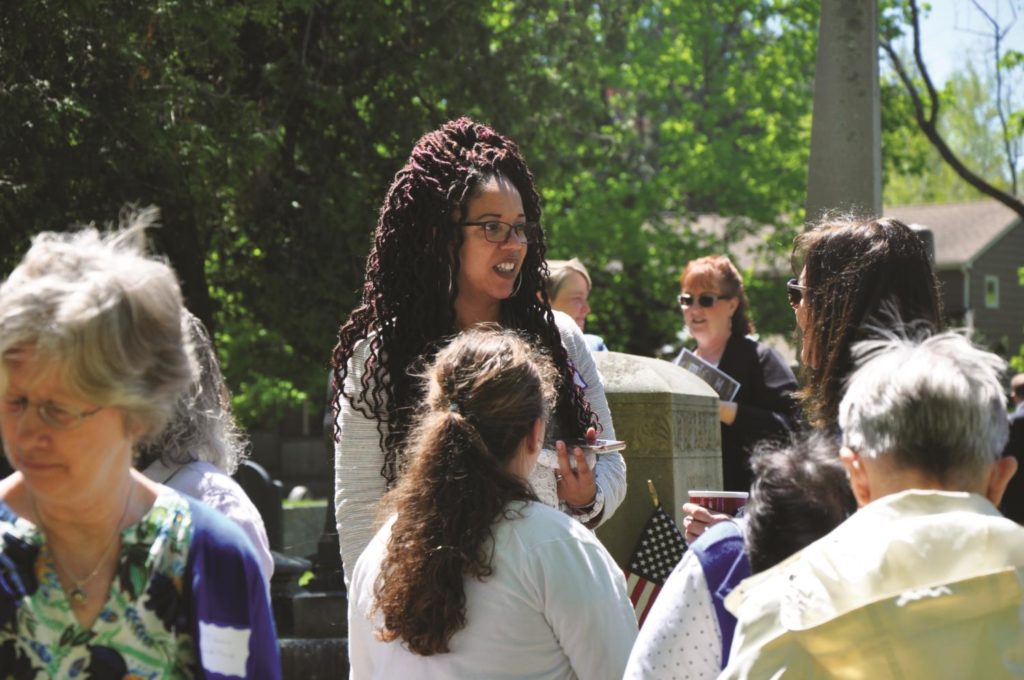
The students had settled the matter of how the stone should look. But what should it say? For help in crafting the epitaph, the class sought the help of Dr. Whitney Battle-Baptiste, associate professor of anthropology and director of the W.E.B. Du Bois Center at the University of Massachusetts at Amherst.
No stranger to Foster’s story, Battle-Baptiste had written about Lucy’s home site in her first book, Black Feminist Archaeology. She urged the girls to move away from the idea of setting the word “slave” in stone in their tribute to Lucy. Rather, she encouraged them to think of her as a captive. Mikayla Johnson ’20 was moved by this approach; she says, “Calling them slaves makes them seem like an object as opposed to people who fell into terrible circumstances.”
After a lively round of give-and-take with Battle-Baptiste, the students arrived at an epitaph: “In memory of Lucy Foster. Born into captivity in Boston. Came to her freedom in Andover. Known by God and her community.”
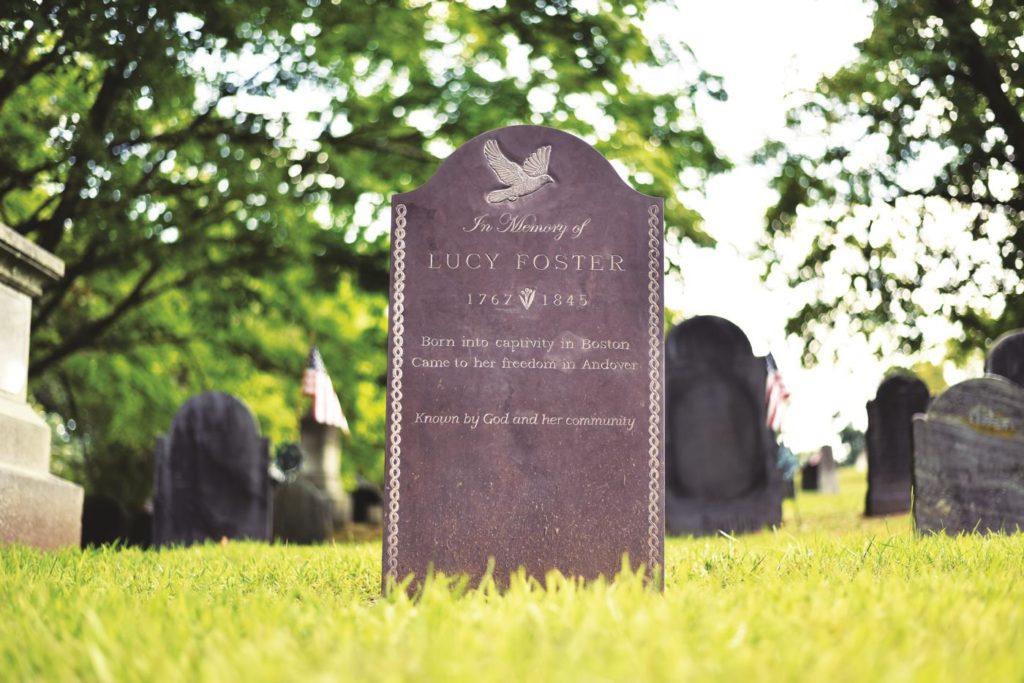
By April, with the design and epitaph settled and funds successfully raised, the students directed Updike to finish carving the stone. On a sparkling day in May, nearly 175 years after her death, seven girls from Penguin Hall placed a gravestone in the ground behind South Church in honor of Lucy Foster.
It is a day they will not soon forget. Dubbing it “Dig Day,” the girls made matching t-shirts for the occasion, and each student signed the lower part of the stone with a special stylus before it was concealed in the ground. Upon the suggestion of Autumn Armano ’20, each student also wrote a note to Lucy that was placed in a jar and buried alongside her stone. As Elise Welch put it, “We have spent all this time talking about Lucy. This gives us a chance to talk to Lucy.”
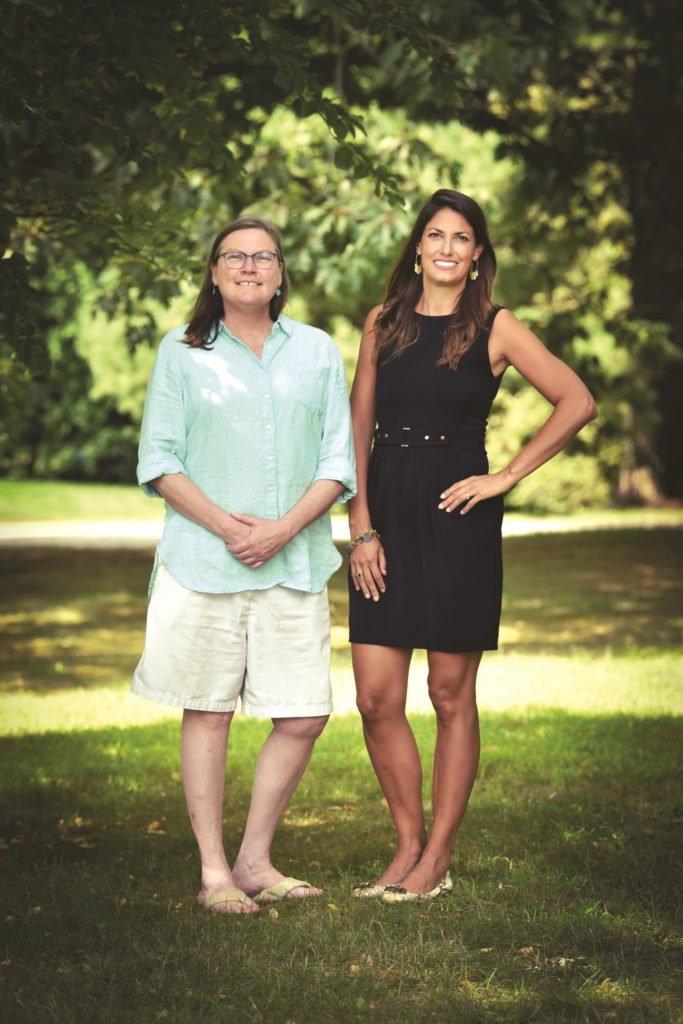
Two days later, the students gave Lucy Foster the memorial service she never had. Planned with the help of Rev. Dana Allen Walsh, senior pastor at South Church, this event allowed the students to reflect publicly upon Lucy and her life. Caroline Buck told the story of finding Lucy. Lila Caplan offered a violin solo; Mikayla Johnson led the congregation in singing “Amazing Grace.” Elise Welch reflected on Lucy’s dishes, and Autumn Armano read a poem by classmate Sophie Chabot ’20 (who was away studying in France). Anna Barrows ’22 and Julia Sullivan ’19 joined Rev. Walsh in offering a benediction.
At the conclusion of the service, the nearly 100 people in attendance gathered around Lucy’s stone for an unveiling by Battle-Baptiste. Each student proceeded to place a rose at the base of the stone in honor of the memory of Lucy and her life in Andover. This stunning tribute in slate, so carefully conceived of by the students, glistened in the sunshine and stands as a reminder of a life once forgotten but now remembered. With that, the goal of the class called “Out of the Shadows” was achieved.

